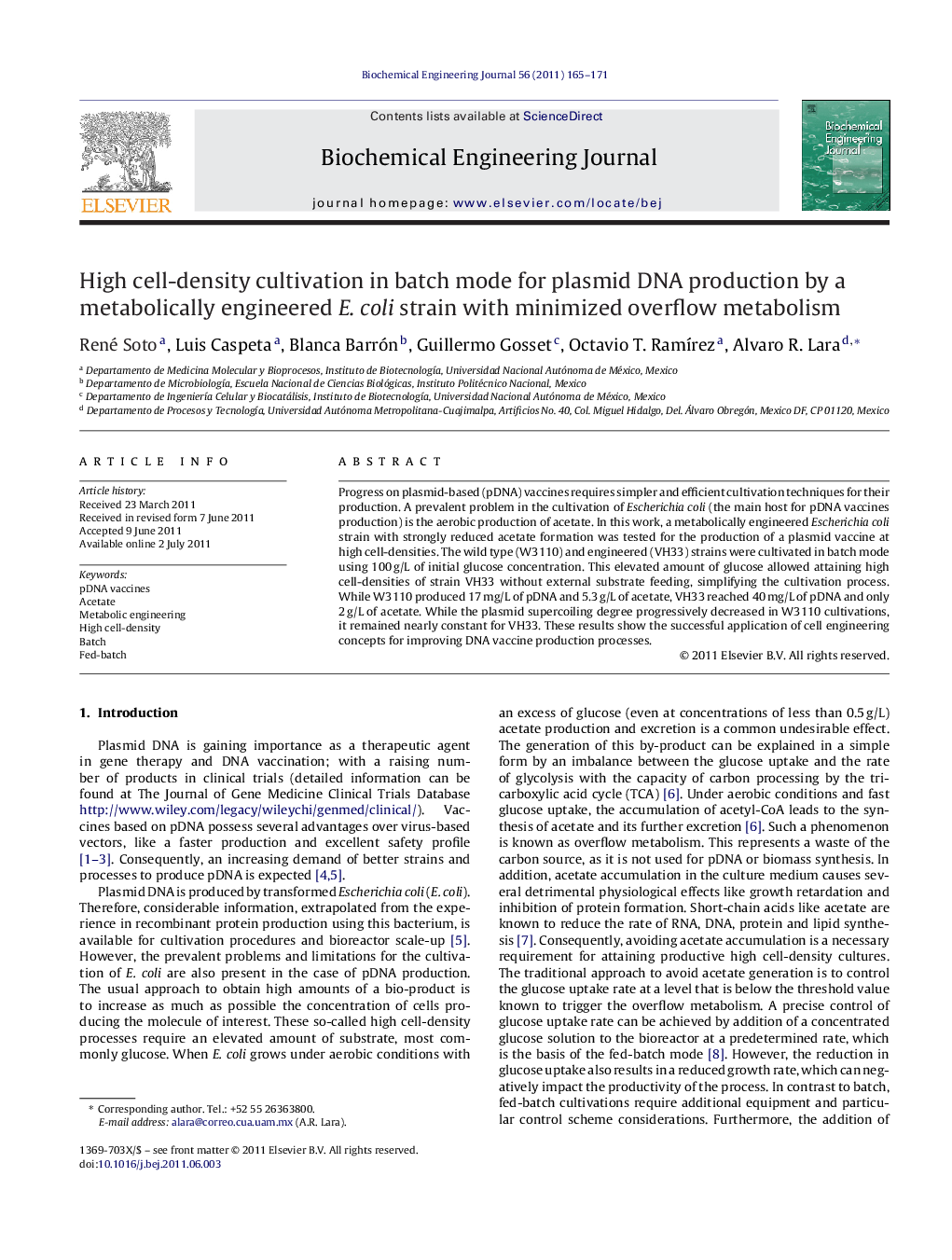| Article ID | Journal | Published Year | Pages | File Type |
|---|---|---|---|---|
| 3712 | Biochemical Engineering Journal | 2011 | 7 Pages |
Progress on plasmid-based (pDNA) vaccines requires simpler and efficient cultivation techniques for their production. A prevalent problem in the cultivation of Escherichia coli (the main host for pDNA vaccines production) is the aerobic production of acetate. In this work, a metabolically engineered Escherichia coli strain with strongly reduced acetate formation was tested for the production of a plasmid vaccine at high cell-densities. The wild type (W3110) and engineered (VH33) strains were cultivated in batch mode using 100 g/L of initial glucose concentration. This elevated amount of glucose allowed attaining high cell-densities of strain VH33 without external substrate feeding, simplifying the cultivation process. While W3110 produced 17 mg/L of pDNA and 5.3 g/L of acetate, VH33 reached 40 mg/L of pDNA and only 2 g/L of acetate. While the plasmid supercoiling degree progressively decreased in W3110 cultivations, it remained nearly constant for VH33. These results show the successful application of cell engineering concepts for improving DNA vaccine production processes.
• A PTS− GalP+E. coli strain was tested for pDNA production and compared to its parental strain. • Both strains were tested in batch mode using 100 g/L of initial glucose concentration. • The modified strain produced more than the double of plasmid DNA than its parent. • The modified strain accumulated 2 g/L of acetate, while the parental strain produced 5.3 g/L.
